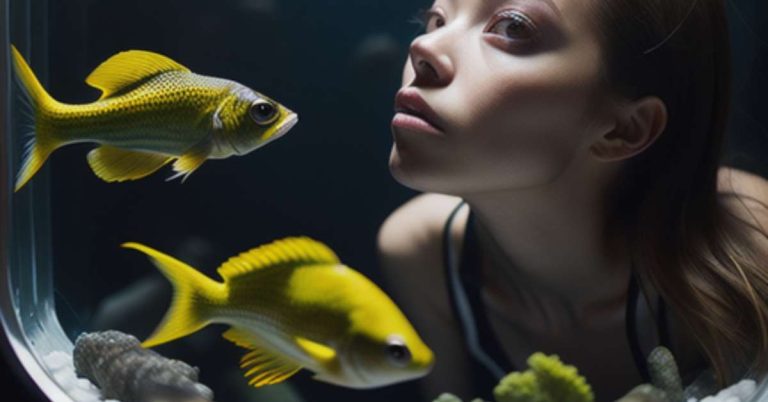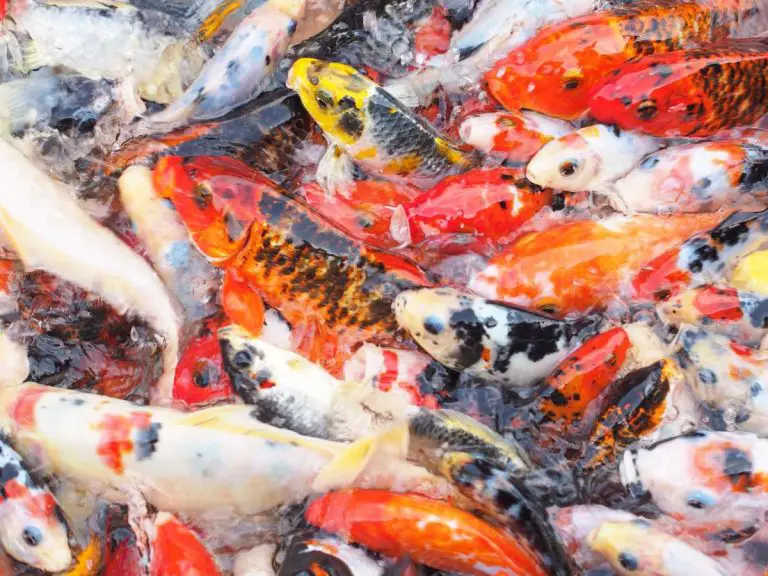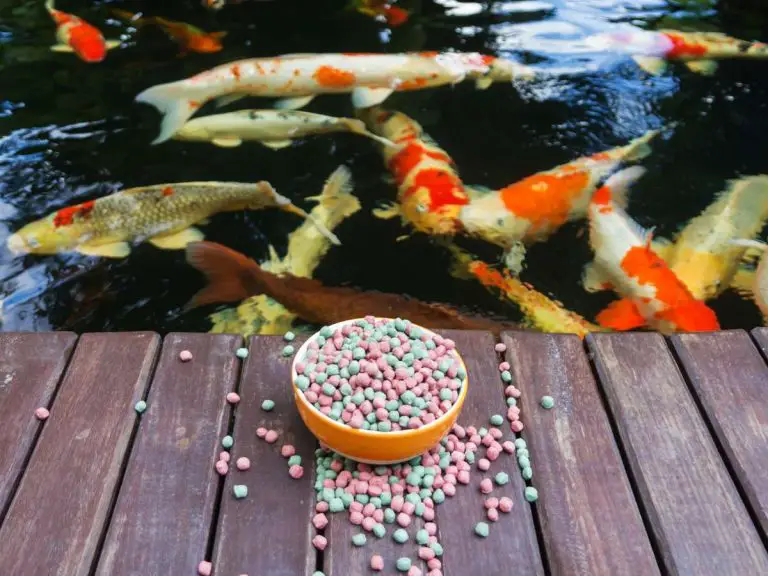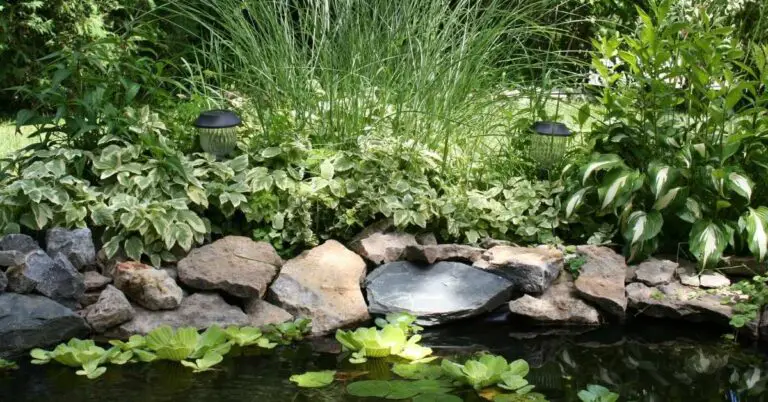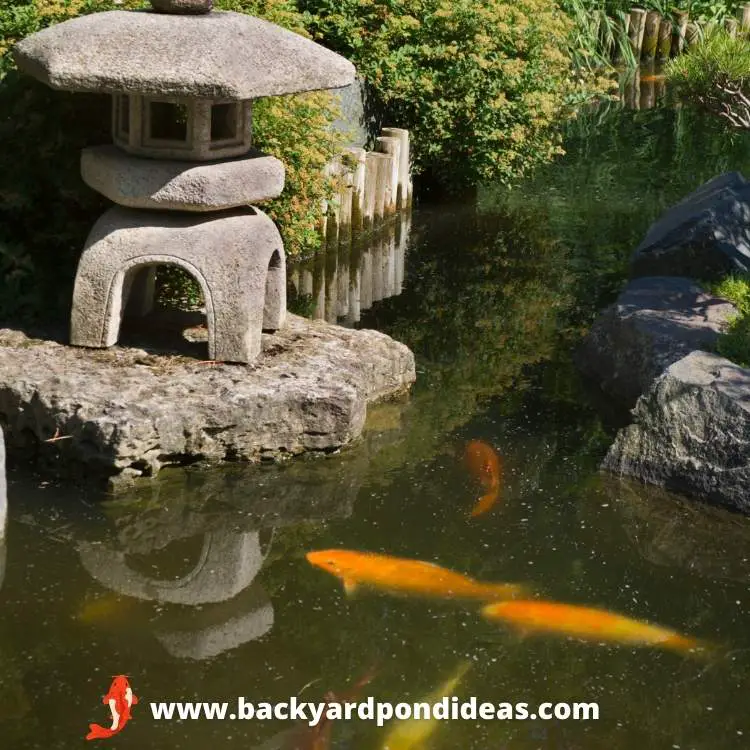What Do Koi Eggs Look Like? Learn Their Traits So You Can Spot Them Easily
Koi eggs are fascinating, with distinct visual characteristics that set them apart from other fish eggs. Understanding their unique physical features, identifying cues, and developmental stages can help you spot them – and care for them.
So, what do koi eggs look like? Koi eggs come in varying sizes, colors, and shapes, and some even have unique patterns or markings. Their coloration can range from pale yellow to orange, and they are typically small and oval-shaped. Some have tiny black speckles or lines, making them truly fascinating to observe. These distinguishing characteristics make it easier to identify koi eggs from other fish eggs.
Curious to learn more about the physical, visual, and developmental aspects of koi eggs? Whether you’re an enthusiast wanting to know more about these beautiful creatures or an amateur breeder looking to expand your knowledge, keep reading to uncover the secrets of koi egg appearance and explore their significance in the breeding process.
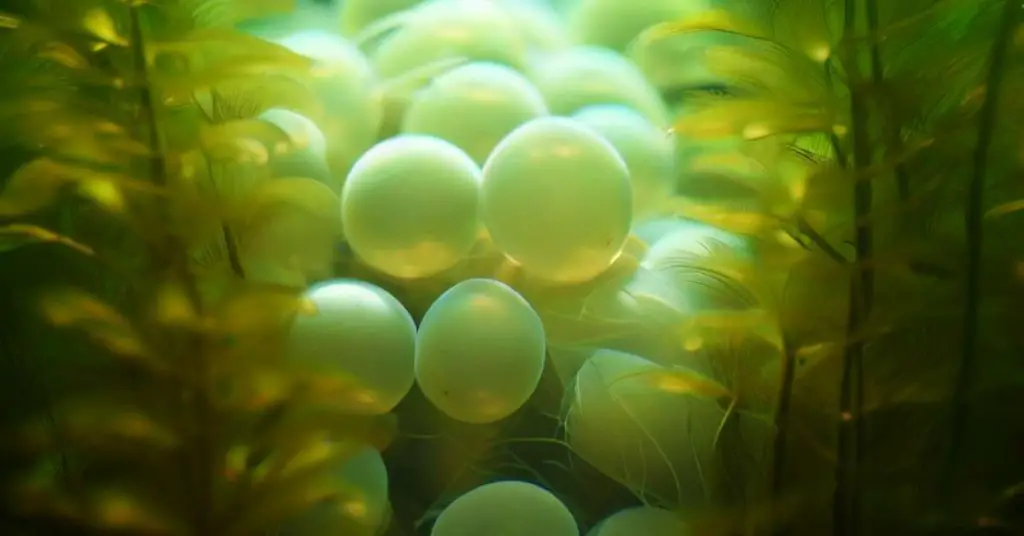
Physical characteristics of koi eggs
The physical characteristics of koi eggs play a crucial role in differentiating them from other fish eggs. Let’s take a closer look at these distinct visual features.
Size
Koi eggs are relatively small, measuring around 1.5 to 2.5 millimeters in diameter. While they may seem tiny to the naked eye, their small size is what allows koi parents to scatter a large number of eggs during the spawning process, ensuring the survival and continuation of the species.
Color
Koi eggs have a vibrant and eye-catching color. They are typically semi-transparent or translucent, with a range of hues including yellow, orange, and white. The translucent nature of the eggs allows light to pass through, making them appear even more mesmerizing when observed underwater.
Shape
The shape of koi eggs is usually spherical, resembling tiny marbles. This gives them a smooth and rounded appearance, allowing them to roll along the pond bed or float gently in the water. The round shape also helps protect the delicate embryos inside, providing a sturdy outer layer.
Unique patterns or markings
One of the most fascinating aspects of koi eggs is the presence of unique patterns or markings. These intricate designs can vary widely and are specific to each individual koi. Some eggs may have speckles or dots, while others may display streaks or lines. These distinctive patterns serve as a visual identifier, allowing koi enthusiasts and breeders to differentiate between different koi offspring.
| Characteristic | Koi Egg Description |
|---|---|
| Size | 1.5 to 2.5 millimeters in diameter |
| Color | Semi-transparent or translucent; yellow, orange, and white |
| Shape | Spherical, resembling tiny marbles |
| Unique Patterns | Speckles, dots, streaks, or lines |
Identifying features of koi eggs
Koi eggs possess unique visual characteristics that make them easily distinguishable from other fish eggs. One of the key visual cues is their distinctive coloration. Koi eggs typically have a vibrant orange or yellow hue, although variations in colors such as white or cream are also possible. These vivid colors make them stand out and catch the eye, making them easily recognizable.
In addition to their striking color, the external appearance of koi eggs also sets them apart. They have a smooth and shiny surface, with a slightly transparent quality that allows you to see the developing embryo inside. Unlike some other fish eggs that may be dull or have a rough texture, koi eggs have a glossy and polished look, which further enhances their visual appeal.
Differences from other fish eggs
When comparing koi eggs to those of other fish species, several key differences become apparent. Firstly, the color of koi eggs is distinctively different from many other fish eggs, which tend to be more translucent or have a pale coloration. This variation in color helps to differentiate koi eggs from others.
Furthermore, the shape of koi eggs is also unique. They are typically spherical or ovoid in shape, resembling tiny marbles. This rounded shape sets them apart from the elongated or irregular shapes of eggs from other fish species.
Koi eggs also often feature interesting patterns or markings, which further aid in their identification. These patterns can take the form of spots, speckles, or even stripes. While each koi egg may have its own distinct pattern, these markings serve as an additional identifying characteristic that is not commonly found in the eggs of other fish species.
Development stages of koi eggs
The development stages of koi eggs are a fascinating process that begins with fertilization and progresses through multiple growth stages. Here’s their journey from conception to hatching.
Fertilization process
Koi eggs are externally fertilized, meaning that the female lays her eggs and the male fertilizes them externally with his milt. This usually occurs after a courtship dance, during which the male chases the female and nudges her abdomen to release the eggs. The male then releases his milt, which contains sperm, and fertilizes the eggs.
Early development
After fertilization, koi eggs enter the early development stage. At this point, the eggs are tiny and transparent, making it difficult to see any significant changes. However, if you observe closely, you may notice slight changes in color and size. The embryos start developing and feeding on the yolk sac, which provides them with essential nutrients.
Growth stages
As the koi eggs progress in their development, they go through several growth stages. These stages are known as “eyed-egg,” “hatchling,” and “free-swimming fry.” During the eyed-egg stage, you can see the eyes of the developing embryos through the egg’s transparent outer layer. It is a remarkable sight to witness these tiny eyes forming.
The hatchling stage marks the moment when the koi fry start to break free from their eggs. Their bodies become more visible, and they develop a small, distinct shape. Once they hatch, they enter the free-swimming fry stage. At this point, they are ready to explore their surroundings, although they still rely on their yolk sac for nourishment.
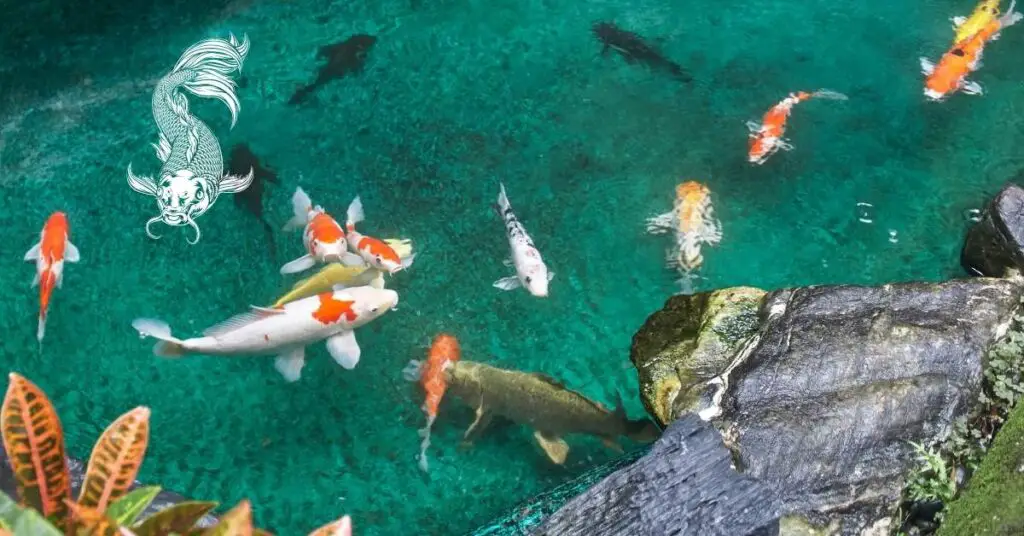
Environmental factors affecting koi egg appearance
Many factors impact the way that koi eggs look. For example, if you have multiple fish in your pond (like koi and bass living together, for example), that can impact the quality and safety of your koi eggs.
Here’s what you should know about how your backyard koi pond itself can impact any eggs.
Water quality
Water quality plays a crucial role in determining the appearance of koi eggs. If the water is polluted or contains harmful chemicals, it can negatively impact the eggs, resulting in irregular or discolored patterns. On the other hand, clean and well-maintained water promotes healthy egg development, leading to vibrant and well-defined patterns. To ensure optimal water quality, pond owners should regularly test and monitor the pH levels, ammonia levels, and overall water cleanliness.
Temperature
The temperature of the water can significantly influence the appearance of koi eggs. Different temperature ranges are known to produce varying colors and patterns. For instance, warmer water temperatures often result in brighter and more vivid colors, while cooler temperatures can lead to softer and more subdued hues. Therefore, koi enthusiasts seeking specific egg coloration may need to control and adjust the water temperature accordingly. It’s vital to note that extreme temperatures can have detrimental effects on the eggs, causing deformities or even death, so it’s crucial to maintain a stable and appropriate temperature range.
Oxygen levels
The oxygen levels in the water are also an essential factor in determining the appearance of koi eggs. Sufficient oxygen is required for their development, and inadequate levels can result in abnormal growth patterns or even mortality. If the oxygen levels are too low, it can lead to discoloration, paler patterns, or reduced overall vigor. Pond owners must ensure proper aeration and oxygenation of the water, especially during the critical stages of egg development, to promote healthy and vibrant eggs.
Care and protection of koi eggs
When it comes to koi eggs, providing a nurturing environment is crucial for their survival. These delicate little spheres require special care to ensure they develop into healthy koi fry.
Predation is a constant threat to koi eggs, as they are an easy target for hungry predators. Creating a safe space for the eggs is essential to protect them from harm. Consider using spawning brushes or floating mats in your pond to provide the eggs with a protective barrier.
In some cases, it may be necessary to resort to artificial methods of incubation to enhance the chances of survival for koi eggs. This can involve collecting the eggs and placing them in a separate tank equipped with appropriate filtration systems. While it may seem like a drastic measure, it can be necessary to give the eggs the best chance of developing into healthy koi fry.
When raising koi eggs, it’s important to monitor water quality closely. Any fluctuations or imbalances in pH levels, ammonia, or nitrate levels can have detrimental effects on the eggs. Regular water testing and appropriate adjustments are necessary to maintain optimal conditions for the eggs’ development.
Temperature also plays a significant role in the well-being of koi eggs. Ideally, the water temperature should range between 60°F and 80°F (15°C and 27°C), with 70°F (21°C) being the optimal temperature for faster hatching and healthier fry. Monitoring and regulating the water temperature can be achieved with the help of a reliable pond heater or chiller, depending on the situation.
Oxygen levels are another critical factor to consider when caring for koi eggs. Proper oxygenation is essential for their development. Implementing a well-designed aeration system or adding additional air stones to the tank or pond can help ensure sufficient oxygen supply for the eggs.
By providing a nurturing environment, protecting koi eggs from predators, monitoring water quality, regulating temperature, and maintaining appropriate oxygen levels, koi enthusiasts and amateur breeders can greatly increase the chances of successful egg hatching and the development of healthy koi fry.
Importance of koi eggs in the breeding process
Koi eggs play a crucial role in maintaining the population of these beautiful fish. By breeding koi, we can ensure that their numbers continue to thrive and that the unique genetic traits of each individual koi are preserved.
Without koi eggs, the population could rapidly decline, and we would lose the opportunity to witness the stunning variety of colors and patterns that koi are known for.
Manual breeding techniques
One of the ways we can control and enhance koi populations is by using manual breeding techniques. This involves carefully selecting which koi we want to mate, based on their desirable traits, such as coloration or pattern.
By manually breeding koi, we can ensure that the offspring inherit the desired characteristics, resulting in a more refined and consistent appearance in the population. This process requires knowledge and expertise, as the breeder must carefully consider the genetic makeup of each individual koi.
Selective breeding for desired traits
Selective breeding is a fascinating aspect of koi breeding. It allows us to create new and unique variations by combining the best traits from different individuals.
For example, if we want to breed koi with vibrant red coloration, we can selectively mate koi that exhibit this trait. Over time, through careful selection of breeding pairs, we can develop koi with even more intense and striking red coloration.
This process of selective breeding allows us to continually improve and refine the appearance of koi, creating new varieties that captivate enthusiasts and collectors around the world.
Conclusion: Protect your precious koi eggs
Ultimately, koi eggs are the starting point for every koi enthusiast and amateur breeder. By understanding their physical characteristics and identifying features, we can track their development stages and create the best possible environment for their growth. Water quality, temperature, and oxygen levels all play a crucial role in the appearance and health of koi eggs, so paying attention to these factors is essential.
By providing a nurturing environment and protecting against predators, we can ensure the survival of these precious eggs. For those looking to take a more hands-on approach, artificial methods of incubation provide another option for koi egg care.
Koi eggs are not only fascinating to observe but also hold great importance in the breeding process. They are instrumental in maintaining the koi population and allow us to apply manual and selective breeding techniques to achieve desired traits in future generations. Whether you’re a dedicated koi enthusiast or just curious about the world of ponds, understanding koi egg appearance is a valuable piece of knowledge.
Summary of main points:
– Koi eggs have distinctive physical characteristics such as size, color, shape, and unique patterns or markings.
– Visual cues and differences from other fish eggs help in identifying koi eggs.
– The development stages of koi eggs include fertilization, early development, and growth stages.
– Environmental factors, such as water quality, temperature, and oxygen levels, significantly impact koi egg appearance.
– Nurturing and protecting koi eggs is crucial for their survival, with options for artificial incubation available.
– Koi eggs play a vital role in maintaining the koi population and allow for manual and selective breeding techniques to achieve desired traits.
– Understanding koi egg appearance is valuable for koi enthusiasts and amateur breeders.
Related Questions
Q: How long does it take for koi eggs to hatch?
A: The time it takes for koi eggs to hatch can vary depending on various factors such as water temperature and quality. On average, it takes around 4 to 7 days for koi eggs to hatch.
Can you artificially hatch koi eggs?
Yes, koi eggs can be artificially hatched through a process called incubation. This involves carefully monitoring water conditions, temperature, and oxygen levels to create an optimal environment for the eggs to develop. Artificial hatching can help increase the survival rate of koi fry and is commonly used in controlled breeding programs.

